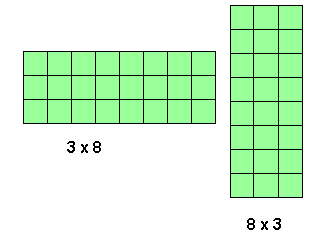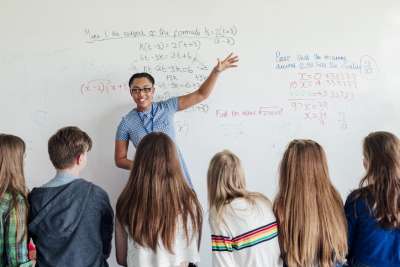Learn how to effectively use fraction strips, spinners, counters, and more
Manipulatives are physical objects that are used as teaching tools to engage students in the hands-on learning of mathematics. They can be used to introduce, practice, or remediate a concept. Use this resource to help your students learn how to use manipulatives successfully.Looking for more manipulatives like fraction strips? Find them in our math resources center.
How Can You Make It Happen?
The amount of time students need to progress from concrete to abstract understanding varies by concept and by student. It may occur within a single lesson, but more often it occurs over days, weeks, months, or even years, as the concept is revisited. A concept (for example, multiplication) may be introduced and practiced at the concrete and pictorial levels in one grade, then reviewed at these levels and practiced at the abstract level in the next grade.
Students in primary grades need to see many examples of the same concept as well as a variety of non-examples of the concept.For example, these are equivalent fractions: 1/2 = 1/4

These are not equivalent fractions: 1/2, 5/8

When students can use different manipulatives to represent the same concept, their ability to understand subsequent math concepts is enhanced. When a new manipulative is going to be used in a lesson, you should allow students time to examine it and explore its use before giving them concrete directions. You can do this by allowing time at the beginning of the lesson for this unstructured use, or by making the manipulative available to students in an area of the classroom they have access to during the day, such as in a learning center. Then, before you give students the task they are to work on using the manipulative, demonstrate how to use it. For example, when using base-10 blocks, introduce the ones-blocks, model how to count them, and show students where they are placed on the place value chart. Then, show students the ten-sticks. Have them count each block in the ten-stick to discover that there are ten blocks, and then show students where they are placed on the place-value chart. Have student pairs regroup ten-sticks into ones-blocks and model numbers such as 11, 16, or 23.
In upper-level classes, lessons are more productive when teachers structure activities and allow some systematic exploration of the manipulatives, when teachers do not immediately correct deviations from the prescribed "procedure," and when they guide rather than lead exploration of mathematical ideas (Stein 2001).
Whole-Number Operations
You can model conventional ways of representing mathematical situations, but it is important for students to use representations that are meaningful to them. For example, to find the sum of 43 + 29, some students prefer to add the numbers in the tens place, 40 + 20, add the numbers in the ones place, 9 + 3, and combine them, 60 + 12 = 72, to find the sum. Introduce students to manipulatives, and have students use them to solve a problem using conventional algorithms or their own, and record their work. Students in grades 3-5 should use manipulatives as tools for solving problems, such as blocks to represent place value, counters to represent multiplication, and graphs and charts to model problems.
Place Value
Have students use base-10 blocks to represent numbers in as many ways as possible. For example, the number 38 can be made with 3 ten-sticks and 8 one-blocks, 2 ten-sticks and 18 one-blocks, 38 one-blocks, and so on. Students can use the place value charts to write numbers using expanded notation:
38 is 3 tens and 8 ones
30 + 8.
Multiplication
Have students use counters to make arrays representing multiplication facts. Make an array of counters for 3 x 8, and have students record the multiplication sentence and product. Have them also make an array of 8 x 3 to reinforce their understanding of the commutative property when solving multiplication problems.

Arrays can also help students understand the distributive property. Students can find 12 x 6 by multiplying 10 by 6, and then 2 by 6, and then adding the products together to find the answer.














